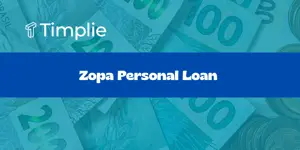In today’s uncertain financial landscape, selecting the right loan structure can dramatically impact your long-term stability and cash flow. Whether you are financing a home, a car, or embarking on further education, understanding the nuances between fixed and variable interest rates is crucial. This guide will arm you with the insights needed to weigh options, anticipate risks, and make a decision that aligns with your goals and comfort level.
Understanding Fixed and Variable Interest Rates
A fixed interest rate remains constant for the entire duration of the loan. Borrowers know exactly what they will pay each month, which simplifies budgeting and shields them from market volatility. In contrast, a variable interest rate, sometimes called an adjustable rate, can rise or fall based on a benchmark index such as the prime rate or SOFR (Secured Overnight Financing Rate). This structure often begins with a lower rate but carries the possibility of future adjustments.
To visualize the key differences, consider the table below:
Pros and Cons of Each Option
Deciding between a fixed or variable loan hinges on your priorities. If consistency and safety top the list, a fixed rate offers predictable monthly payments throughout the term. It also provides protection from future rate increases, making it ideal for those who rely on stable expenses. However, if market rates decline, the borrower gains no benefit.
- Fixed Rate Pros: Consistent payment schedule, easy long-term planning, immunity to market rate hikes.
- Fixed Rate Cons: Higher starting rate, no savings if rates fall.
- Variable Rate Pros: Lower initial borrowing costs, potential for substantial rate savings in a falling rate environment.
- Variable Rate Cons: Unpredictable future payments, higher long-term risk, risk of payment shocks if benchmarks spike.
Key Factors Influencing Loan Interest Rates
Multiple elements determine whether you qualify for attractive rates. Understanding these criteria helps you prepare a stronger loan application:
- Personal Credit Score: Higher scores generally secure lower rates.
- Credit History: A track record of on-time payments boosts lender confidence.
- Employment and Income: Steady work and sufficient earnings reduce perceived risk.
- Debt-to-Income Ratio: Lower ratios indicate better capacity to repay.
- Loan-to-Value Ratio: Loans with lower LTVs often carry better rates.
- Economic Benchmarks: Central bank policy, inflation, and economic health shape general rate climates.
- Loan Fees and Costs: Application and origination fees can affect overall affordability.
Typical Use Cases and Special Features
Fixed-rate loans are favored for substantial, long-term financing, such as 30-year mortgages or auto loans, where vital for long-term budgeting is crucial. They offer peace of mind when projecting costs over decades.
Variable-rate products, including HELOCs, credit cards, and ARMs (adjustable-rate mortgages), serve well for shorter horizons or when borrowers believe they can refinance or pay off balances quickly. Many ARMs feature introductory periods—commonly 3, 5, or 7 years—during which the rate is fixed before annual adjustments occur. Rate caps and floors set boundaries on how much an index-based rate can change, though these limits may still permit significant fluctuations.
Decision-Making Framework
Choosing the right rate hinges on a clear assessment of your personal and market factors. Consider these questions before deciding:
Risk Tolerance: Can you absorb potential payment spikes if rates climb? If missing payments would jeopardize your finances, a fixed rate may be safer.
Loan Duration: For shorter loans, variable rates often pose less risk due to limited adjustment windows.
Financial Goals: Are you focused on immediate savings or long-term stability? A borrower confident in rising but manageable income might lean toward variable options.
Market Expectations: Though predicting interest rate movements is uncertain, reviewing forecasts and economic indicators can inform your strategy.
Quantitative Examples and Benchmarks
At origination, fixed-rate mortgages may carry an interest premium of 0.5–1.5 percentage points versus comparable variable-rate products. For example, if a 5/1 ARM starts at 3.0%, a 30-year fixed might begin at 4.0%. If market rates fall by 0.5 points after five years, the ARM rate could drop to 2.5%, lowering payments. Conversely, if rates rise by 1.0 point, your ARM obligation could climb above 4.0%, demonstrating the trade-off between potential for significant future rate reductions and risk.
Caps on variable loans typically include annual limits (e.g., max 2% increase per adjustment) and lifetime caps (e.g., no more than 6% above the initial rate). Understanding these caps helps you model worst-case scenarios and maintain control over your borrowing costs.
Conclusion
There is no universal answer when choosing between fixed and variable interest rates. Each path has advantages and drawbacks that hinge on your financial situation, risk profile, and outlook. A comprehensive review of all loan terms, including margins, cap structures, and fees, will guide you toward the option that best aligns with your goals. Whether you prioritize peace of mind and security or strategic long-term cost savings, an informed decision can transform a loan from a burden into a powerful tool on your journey to financial freedom.
References
- https://www.synchrony.com/blog/bank/fixed-vs-variable-rates
- https://farmcreditcfl.com/resources/article/26-factors-determining-your-interest-rate
- https://www.investopedia.com/ask/answers/07/fixed-variable.asp
- https://www.bankfirstfed.com/connect/news/detail.html?title=mortgage-guide-rates
- https://www.capitalone.com/learn-grow/money-management/fixed-vs-variable-apr/
- https://www.experian.com/blogs/ask-experian/what-factors-do-lenders-consider-when-determining-my-interest-rate/
- https://www.iowastudentloan.org/articles/college/fixed-or-variable-interest-rate.aspx
- https://www.minneapolisfed.org/article/2000/how-do-lenders-set-interest-rates-on-loans










